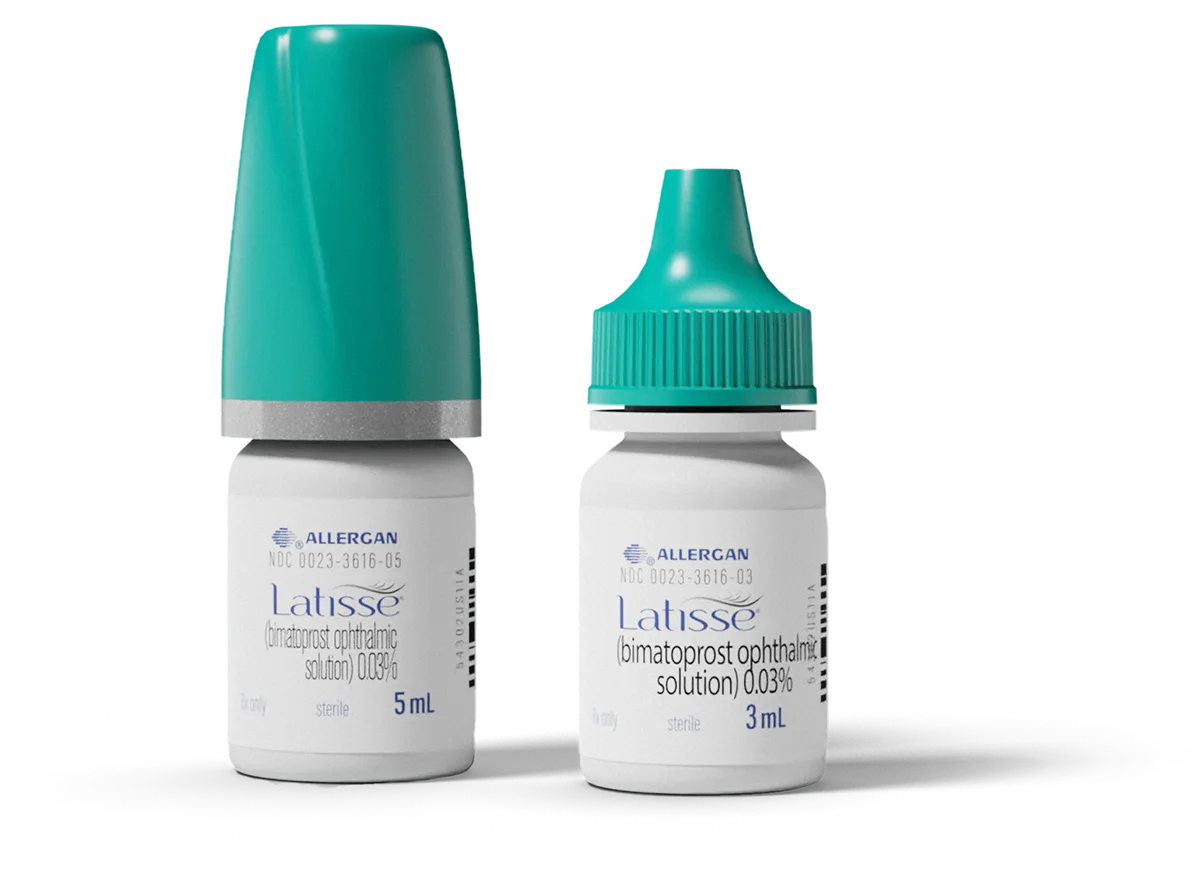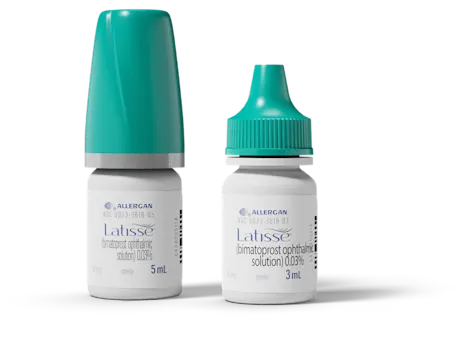

Important Safety Information for Latisse
What is the FDA-approved use of Latisse®?
Latisse is used to increase growth of eyelashes in those with sparse lashes, including length, thickness, and darkness.
Who should not use LATISSE®?
Do not use Latisse if:
You have a known allergic reaction to Latisse..
How should I use Latisse?
Remove all makeup, cleanse the face, and take out contact lenses.
Apply one drop every night directly to the skin of the upper eyelid margin at the base of the eyelashes using the accompanying applicators.
Blot any excess solution beyond the eyelid margin.
Dispose of the applicator after one use.
Repeat for the opposite eyelid margin using a new sterile applicator.
Latisse should never be applied directly into the eye or to the lower lid.
What should I tell my Ro-affiliated provider before using Latisse?
It’s important to tell your Ro-affiliated provider all of the medications you are currently taking, including prescription, over-the-counter medications, vitamins, and herbal and dietary supplements.
Some medications to watch out for include:
Lumigan, which has the same active ingredient as Latisse, or other prostaglandin analogs that lower intraocular pressure. Latisse may decrease the intraocular pressure lowering effect of these medications.
It’s important to share your entire medical history with your provider. In particular, tell your provider if you have or have a past history of:
Glaucoma
Active eye inflammation (e.g. uveitis)
Macular edema
Aphakia
Have recently had a procedure on one or both eyes, including Lasik surgery or cataract surgery
Other eye problems
Tell your provider if you are pregnant, planning to become pregnant, or breastfeeding. You should discuss with your provider if Latisse should be used during pregnancy or while breastfeeding.
Withholding or providing inaccurate information about your health and medical history in order to obtain treatment may result in harm, including, in some cases, death.
What are the most serious side effects that I or a caregiver should monitor for when taking Latisse?
If you are experiencing a medical emergency, call 911 or seek immediate medical attention.
These serious side effects are rare, but can occur with Latisse. You or a caregiver should carefully monitor for these side effects, especially in the beginning of treatment and with dose changes.
Effects on Intraocular Pressure: If you are using Lumigan, which has the same active ingredient as Latisse, or other prostaglandin analogs for the treatment of intraocular pressure, using Latisse at the same time may decrease the pressure lowering effects of the other medications. Your provider should monitor for changes to intraocular pressure.
Darkening of the Iris: There is potential for increased brown iris pigmentation which is likely to be permanent. Iris color changes seen with administration of Latisse may not be noticeable for several months to years.
Darkening of the Lid: Latisse can cause darkening of the skin and lashes where it is applied. In most patients, this is reversible upon discontinuation of Latisse.
Hair Growth Outside the Treatment Area: There is the potential for hair growth in areas where Latisse comes in repeated contact with the skin surface. Apply Latisse only to the base of the upper eyelid and carefully blot excess solution to avoid it running down the cheek.
Intraocular Inflammation: Use with caution if you have active intraocular inflammation (e.g., uveitis) because inflammation may be exacerbated.
Macular Edema: Macular edema, including cystoid macular edema, has been reported when treating elevated intraocular pressure with Lumigan, which has the same active ingredient as Latisse. Latisse should be used with caution in aphakic patients, in pseudophakic patients with a torn posterior lens capsule, or in patients with known risk factors for macular edema.
Risk of Contamination: Avoid allowing the tip of the bottle to touch any other surface. Only use the sterile applicators that come with the product once and then discard since reuse could result in contamination. Serious infections may result from using contaminated solutions or applicators.
Use with Contact Lenses: Latisse contains benzalkonium chloride, which may be absorbed by and cause discoloration of soft contact lenses. Contact lenses should be removed prior to application of solution and may be reinserted 15 minutes following its administration.
What are the most common side effects of Latisse?
Eye pruritus (itchy eyes)
Conjunctival hyperemia
Darkening of the skin where Latisse is applied
You are encouraged to report negative side effects of prescription products to the FDA. Visit www.fda.gov/medwatch or call 1-800-FDA-1088.